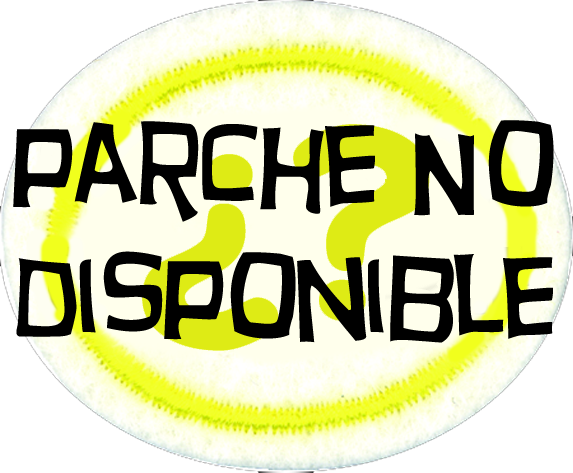Requisitos para la especialidad JA de Salud y bienestar personal
Nivel de destreza
2
Año
2024
Version
11.05.2024
Autoridad de aprobación
División Norteamericana
1. Explicar o ilustrar la diferencia entre el Bienestar y la Salud personal, y la conexión entre ellos.
2. Seleccionar una de las siguientes historias y discutir cómo siguen siendo relevantes para su salud y bienestar personal.
- El Huerto del Edén (Génesis 1:29)
- Daniel en Babilonia (Daniel 1:8-16)
- Israel en el desierto (Levítico 11 y Deuteronomio 14)
- La carta de Pablo (2 Corintios 7:1)
- Jesús y los fariseos (Matthew 15:19-20)
3. Con base en las siguientes afirmaciones, pensar en al menos tres ejemplos de cómo su salud puede afectar su capacidad de ser un «siervo de Dios y amigo de la humanidad»:
- Cita - «El Señor ha designado a los jóvenes para que acudan en su ayuda.» (Testimonios para la Iglesia, pág. 65)
- Voto del Conquistador - «Por la gracia de Dios seré puro, bondadoso y leal. Guardaré la Ley del Conquistador, seré siervo de Dios y amigo de la humanidad»
- Definición - «La salud es un estado de completo bienestar físico, mental y social, y no simplemente la ausencia de dolencias o enfermedades.»
4. Hacer una lista del significado de los principios de salud del acrónimo «ADELANTE». Luego, ordenar estos principios por orden de importancia para usted (siendo 1 el más importante) y compartir o ilustrar por qué los clasificó en ese orden.
5.Review and discuss Adventist Church Fundamental Belief #22 “Christian Behavior” (section about health). Name at least three things that stood out to you.
How do the following wellness themes affect your personal health?
- Fitness (aerobic and anaerobic)
- Healthy eating
- Healthy sleep patterns
- Having a positive mental outlook
- Spiritual community
For each of the categories, research what the healthy standards are for your age group. Evaluate yourself against these standards and choose at least one way to apply them to your lifestyle.
Select one of the following verses and share one thing that the Bible says about keeping the body healthy and using it to honor God:
- Matthew 6:22
- Romans 12:1
- 1 Corinthians 3:16-17
- 1 Corinthians 10:31
- Ephesians 2:10
Select two areas to research:
- Weight management (obesity and eating issues)
- Diabetes
- Malnutrition
- Social isolation and lack of self-esteem
- Substance abuse (i.e., alcohol, vaping, recreational drugs, prescription medication, etc.)
- Life-altering sports injuries
Discover and present creatively the following:
- At least three statistics about each of your selections
- Three reasons why teens often are impacted by these health challenges
- Three sources of help for young people who are dealing with your selections
Different blood tests are used by medical professionals to determine baselines for your health. Do one the following:
- Interview a medical person about the types of blood tests young people often get when being assessed for their health. Make a list of the tests they tell you about and what they say each one of them could tell you about your own health. Ask them which ones would be most healthful in assessing personal health (why are they important?).
OR
- Research what types of blood tests young people often get when being assessed for their health. Create a display that shows each of the tests, their healthy ranges and why each is important in assessing personal health.
Discover and share creatively the following:
- a.
Blood tests that are often required as a condition of employment
- b.
Blood tests that are often required as a condition of entry into a country
- c.
Whether there are blood tests required for your school or nearby educational institutions
Develop a game based on the answers you find to the following questions concerning blood:
- a.
You’re cutting bread with a knife, and you cut yourself. What cells will help stop the bleeding?
- b.
You have an earache and as a result you develop a fever. This means you probably have an infection. What cells will help fight the infection?
- c.
You are climbing a high mountain where oxygen is scarce. What can help you increase oxygen flow to your body?
- d.
You feel generally tired but can’t think of why that might be the case. What do you think the doctor will test you for?
- e.
During cancer treatment these cells can be decreased due to radiation. In turn, this can reduce the body’s ability to fight infection. What are these cells called?
- f.
It’s hot and sunny and you’ve been sweating a lot. You could start to get light-headed if you don’t do something about it. What is your body losing through the sweat?
- g.
You stop at a convenience store and buy a soda and a shake. After you drink them, what level in your blood do you expect to increase?
- h.
The doctor says that your lab blood results look good, including your blood’s cholesterol and triglyceride levels. This means that you are at low risk of what disease?
- i.
Someone is experiencing dizziness, confusion, shakiness, sweating, even loss of consciousness. What blood level would you expect to be very low?
- j.
You haven’t been drinking much water all day and your body is dehydrated. What two blood levels that help determine kidney health would you expect to increase?
12.
Explain how each of the following metrics helps families/young people learn about their health and development. If possible, review your own growth chart or measure your BMI.
- a.
Growth charts (typically for younger children)
- b.
Body Mass Index – BMI (typically for youth 16 and older)


